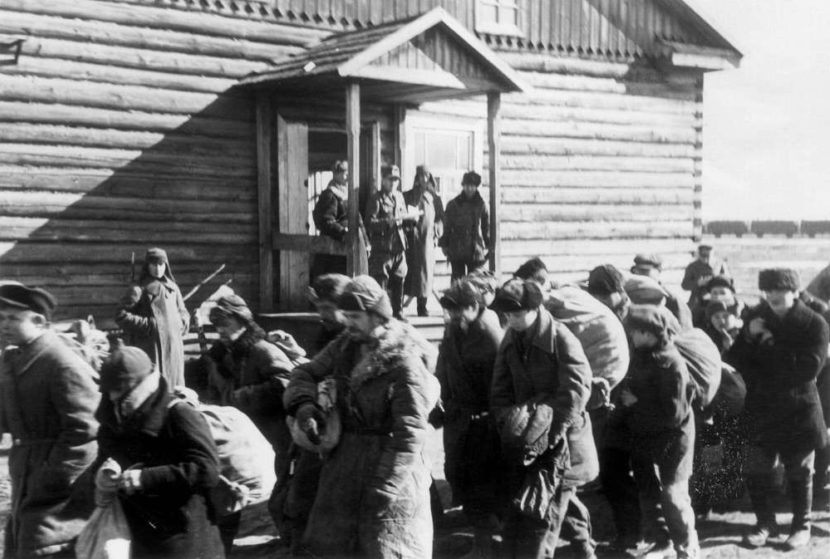Deported to Flossenbürg from across Europe
In Flossenbürg, people from many different European countries were imprisoned. From May 1938 to May 1944, the SS and the Gestapo transported a total of 22,000 men to Flossenbürg. Furthermore, in the last year of the war, a further 78,000 prisoners arrived, among them 16,000 women. Over half of those imprisoned were of Polish or Soviet origin. The more than 22,700 Jewish prisoners were predominately from Poland or Hungary.
![]()
Removal of civilian workers from the Borisow detention center (today Barysau/Belarus) on March 27, 1944 (Bundesarchiv Freiburg)
The first prisoners were Germans and Austrians from the Dachau, Buchenwald and Sachsenhausen concentration camps. Starting in 1940, the Gestapo began sending foreign forced laborers and POWs to Flossenbürg. The SS took Poles, Russians, Belarussians, Ukrainians and Slovenians from the occupied territories.
Via other concentration camps, prisoners arrived in Flossenbürg from France and the Benelux, from Italy, Yugoslavia and from Greece. More than three fourths of the prisoners were registered early in the last year of the war. As a result of the suppression of the Warsaw Uprising and the evacuation of the Plaszow, Auschwitz and Groß-Rosen concentration camps, thousands of Jewish and non-Jewish Poles arrived in Flossenbürg. Only a few days before the disbanding of the camp, several thousand prisoners arrived on death marches from the Buchenwald concentration camp.

